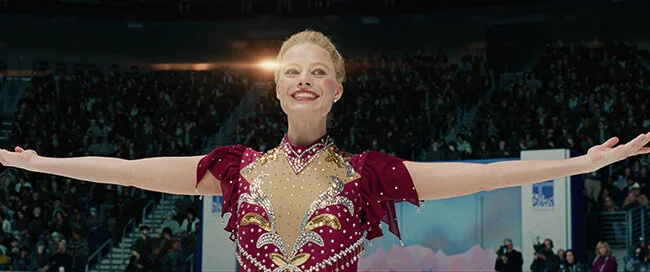Black Love in a Post-Racial Utopia
Race and Romance in Netflix’s Hollywood
In Hollywood, a Netflix miniseries created by Ryan Murphy and Ian Brennan, viewers are invited to imagine a 1940s America in which racism is an aberration. Opportunities are extended to people regardless of their race, sexuality, or gender while white-passing people of color use their privilege to lift up their friends. All of this is facilitated by white studio executives who are committed to systemic change. The series is full of defiant interracial couplings with only the occasional same-race relationship — always between white characters. This choice to challenge societal norms surrounding romance works both for and against the show’s utopian concept.
The final shot of the show’s intro, featuring the main cast standing atop the Hollywood sign. Still from Hollywood, © 2020 Netflix.
As I watched this series, paying special attention to the stories of Archie and fellow Black character Camille, I noticed that they hardly interacted. For me, this raised a question: is a “post-racial” utopian Hollywood one where Black love is considered a relic of a world held back by its awareness of race? There are sometimes white monoracial couplings, but the only relationships that the show refrains from exploring are those between African Americans. This issue could be waved away as a result of the only recurring Black male character being gay, but the question remains: why are there only three Black characters in the first place?
Camille (Laura Harrier), Archie (Jeremy Pope) and Raymond (Darren Criss) in a rare scene in which the two Black leads interact. Still from Hollywood, © 2020 Netflix.
Hattie McDaniel enters the show’s cast around episode five of seven alongside a live-in white girlfriend with whom she shares a polyamorous relationship. However, the potential for a relationship with Camille beyond that of a mentor/mentee is ignored. This isn’t to say that if two Black characters exist within the same narrative they must enter a relationship, but I found it disconcerting that Black characters in the show can only find success through the support of their white or white-passing loved ones. Even in the fictional film Meg, the eponymous character (played by a Black woman) has her life saved by her white boyfriend. The series falls back onto the tired “white savior” trope.
Hattie McDaniel (Queen Latifah) on the phone with Camille. Still from Hollywood, © 2020 Netflix.
If Hollywood could go so far as imagining an America in which it was unfashionable to be racist in 1948, why couldn’t it also imagine a world with more than three Black people working in the film industry? Or more than a handful of people of color? Why couldn’t it imagine a world in which Black people have the power to lift one another up? Forget the idea of romance — could Camille and Archie have been, at the very least, friends? The amount of screen time they shared was negligible compared to the time they spent with other non-Black characters. In the end, the non-Black side characters build Camille and Archie up, diverging greatly from the time period in which the only people looking out for African Americans were other African Americans.
Though the series stands out for the number of actors of color that it casts, it also sees people of color as monolithic and interchangeable. For all of the trouble Hollywood goes through to imagine a post-racial world, there is one named East Asian character, three named Black characters, and no brown characters to speak of. This is compared with the show’s 25 named white characters who fill roles large and small.
Anna May Wong (Michelle Krusiec) and Archie at a script reading. Still from Hollywood, © 2020 Netflix.
In the end, Hollywood’s casting does not fit within its own text. It tries, but the choices made by Ryan Murphy and his team feel like a swing and miss at meaningful diversity. The absence of real camaraderie or love between the show’s main Black characters is only a single example of the difficulties Hollywood faces regarding representation. One can only hope that, if picked up for a second season, its writers will reassess how they choose to confront the complexities and nuances of race.












